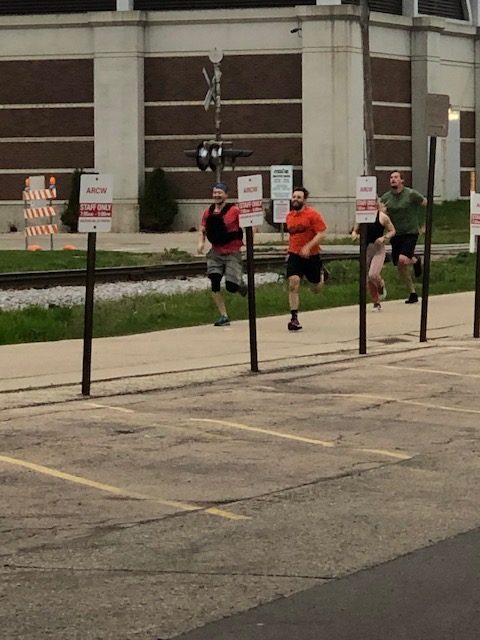Athletes of all kinds are finding themselves in a state of limbo right now. Whether you are a weekend warrior or a high school or collegiate athlete, you may find yourself in this current awkward place of being off-season even when you would normally be participating in your sport of choice right now.
But you still want to stay in shape and ahead of your competition. And you know that athletes are made in the off season. So, in your current “off season,” what are some of the best exercises you can do to stay or get to the top of your game? We’ve got 8 of them for you – complete with what they are, how to do them, and why they are so awesome for you. Here are exercises 7 and 8.
For in depth help with these movements and many more, check out our virtual or in person Personal Training options.
Sprint/Speed Training
What it is and how to do it:
This one has the advantage of being something you can do pretty much anywhere, anytime. Lace up those running shoes and run as hard and as fast as you can.
A great workout is 10 by 100m sprints. Mark off 100m (you can eyeball the distance, use the school track, or even go to an on-line mapping program or app and figure out roughly 100m), start at one end, sprint to the other and walk back as your recovery/rest period.
Why it works:
Sprinting builds so much power by targeting fast-twitch muscle fibers. You will increase endurance, work capacity, and energy use (and improve heart health, insulin sensitivity, circulation, and lung function.)
Sprinting prefers to burn body fat, it’s anabolic (meaning it can increase muscle mass and strength), it works even if you go slowly, it’s more efficient than endurance training, AND it builds new mitochondria.
Why are mitochondria important? The basic function of our mitochondria is to extract energy from nutrients to produce ATP – the standard energy currency of our body. More mitochondria, and the better they work, the more power available to your brain and your body, more fuel burned, more energy produced.
Mobility/Flexibility/Stability Training
What it is and how to do it:
There are many different ways to increase mobility, gain flexibility, and improve stability. One very simple and inexpensive tool to do it with is the lacrosse ball. That simple $2 ball can do so much for the body.
The basic premise is putting that ball in a spot on your body and using your bodyweight to put pressure on the ball while you move it around in small areas. Start with the area around your shoulder blades by lying on the floor, putting the ball somewhere near the scapula, rolling around and rotating your arm from your side all the way to above your head. Feel around for sticky spots and work them out.
Another good area is the nook – the area where your glutes and hamstrings meet. Sit up, put the ball in the nook, cross your legs for some added pressure. Next, work down to your calves. Hit the spot on your calf muscle that is close to your knee and work all the way down to the heel cord and ankles.
You can work the front of the shoulders by standing on a wall with the ball. Same concept applies, use your body weight to put adequate pressure on the ball and work small areas at a time.
Why it works:
That ball will help break up knots in the muscles and lengthen the muscle fibers so they can be used to their full potential and help you stay injury free. Mobility, flexibility, and stability in your muscles, joints and tendons will improve your range of motion. With an increased range of motion, your body as options about how it can move. These options will allow for safer movements and again, help you remain injury-free.
No one wants to miss a game, a week, a month, or a season because of injuries. Be sure to maintain your strong, healthy body – it is less time consuming, and way less frustrating, than trying to rehab from an injury.
Every sport has specific things that need to be trained, but for all athletes (off season or not), there is value in being strong, fast, powerful, and have the stamina and endurance to keep going.

